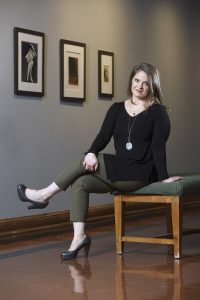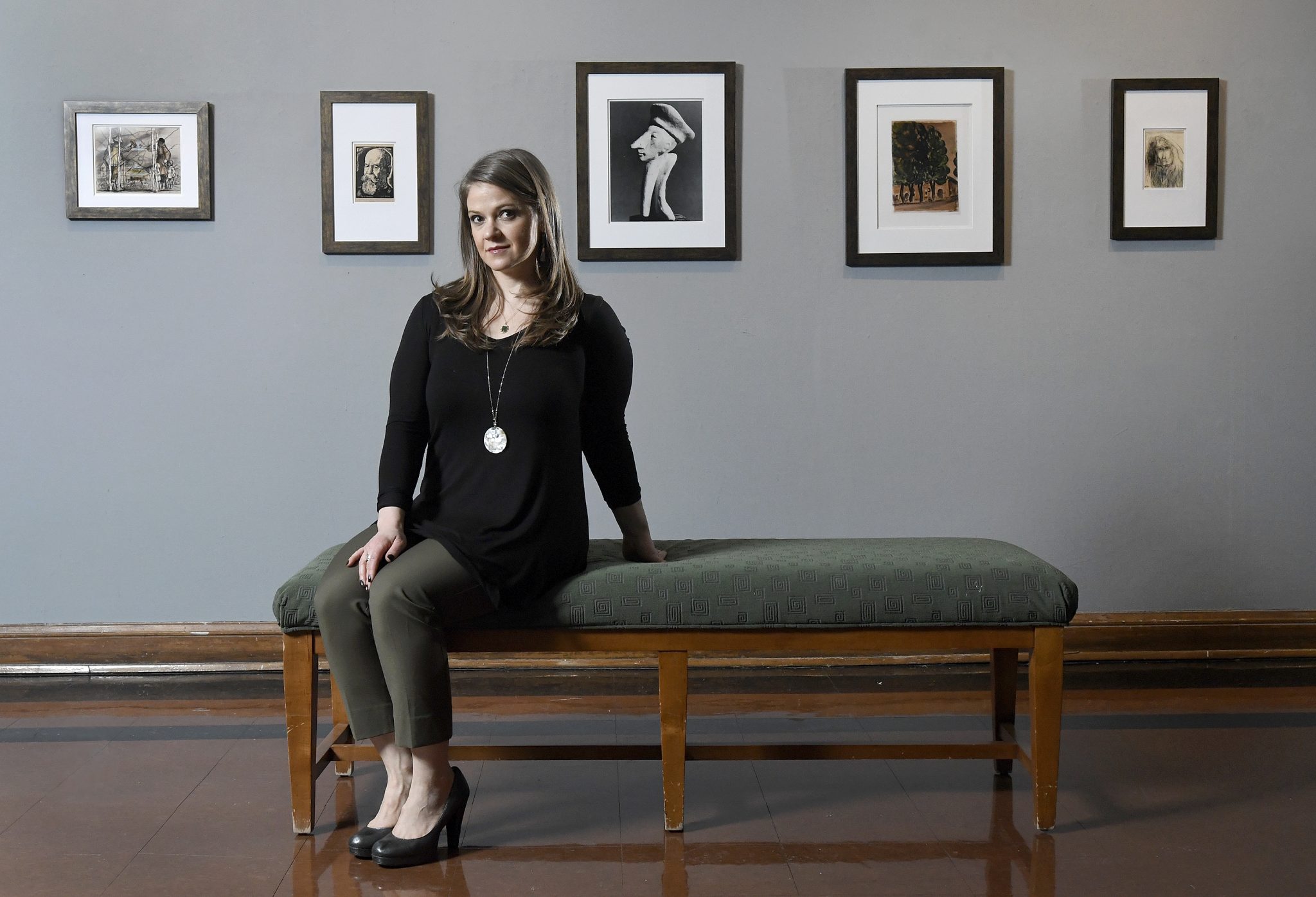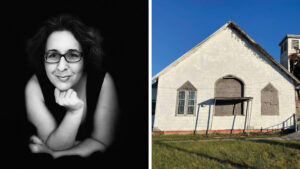We’ve all heard that old saying, “A picture is worth a thousand words.” In her career as an art therapist, Pikesville native Elizabeth Hlavek has frequently found the adage to be quite true.
Now, Hlavek, a private practitioner in Annapolis, is showing others the importance of art therapy through a new exhibition called “Meaning Making Through Art Making: From the Holocaust to Contemporary Art Therapy Practices.”
On display from Jan. 29 to March 9 at Notre Dame of Maryland University’s Gormley Gallery, the exhibition is comprised of art reproductions by Holocaust survivors alongside works created by the patients in Hlavek’s therapy practice.
A reception with Hlavek will take place at the gallery, 4701 North Charles St. on Feb. 3, from 4-6 p.m.
“Artwork offers an additional layer of expression,” says Hlavek. “You aren’t just getting what patients are saying or what their charts say. You are getting a sense of their inner experience. When you go through something so overwhelming and intense, it can be impossible to comprehend. Giving form to the situation makes it more manageable.”
The opening of “Meaning Making Through Art Making” coincides with the launch of Notre Dame’s new undergraduate and graduate degree program in art therapy, the first of its kind in the state.
“I am personally and professionally looking forward to Elizabeth’s deeply meaningful exhibition of reproductions of art … highlighting art’s communicative, transformative and healing capacity,” wrote Cathy Goucher, associate professor and program director of the art therapy department at Notre Dame, in an email. “Even in the most dire of experiences, art serves as witness and provides psychological sustenance.”
Individuals from all over Europe — including those interred in such concentration camps as Auschwitz, Dachau, Gurs and Terezín — created the artwork that will be on display.
“This is one of the first times images from all over Europe are being displayed together in the United States,” says Hlavek, 35.
The exhibition is unusual because it is organized thematically, as opposed to by location or artist. Some of the themes represented include hope, resiliency, autonomy, affirmation of existence, witnessing and identity.

“The theme of identity came up in interviews I conducted with survivors,” says Hlavek. “Many of the artists indicated that having the identity of artist helped them transcend their prisoner identity, and kept them from succumbing to circumstance. They saw themselves as an artist, which gave a sense of purpose. I encourage my clients to explore their sense of identity apart from their diagnosis so that they are reminded that they are more than pathology and illness, but that they are whole people.”
Since the liberation of concentration camps in 1945, there have been more than 30,000 pieces of artwork documented, many of which are housed at Yad Vashem, Israel’s national Holocaust museum and memorial, and the U.S. Holocaust Memorial Museum in Washington D.C. Those who created art while imprisoned either brought supplies with them when they were taken to the camps, kept supplies after creating signs used for Nazi propaganda campaigns or made their own ink out of soot and water.
“There are a lot of portraits and quotes where Holocaust survivors talk about how they felt it was their duty to draw people around them in case those people didn’t survive,” Hlavek says. “The artwork shows these people existed. It’s the juxtaposition of creation amongst an environment of destruction and the idea that people can leave a legacy even when their whole existence was supposed to be annihilated.”
Hlavek has been interested in Holocaust art and art meaning for more than a decade. Her interest peaked after taking a student trip to Europe and visiting an art museum and memorial located at Terezín.
She is currently a doctoral candidate in art therapy at Mount Mary University in Milwaukee and created this exhibition as part of her dissertation.
Interviewing survivors who created artwork during the Holocaust was part of Hlavek’s research. Judy Jacobs is a survivor of Bergen-Belsen and her art will be part of the exhibition.
“Art was a mechanism for lifting morale,” the Budapest-born Jacobs, 80, told Hlavek. “It made the kids [in the camp] feel better about themselves. In a sense, it allowed for transcendence, it transported us out of this misery, at least temporarily. Instead of thinking about what kind of insults I will be called or what kind of insects will bite me in my sleep, we could focus on something else.”
Hlavek says she hopes people will walk away from this exhibition recognizing the “individual within the masses” and how art can play a role in healing and surviving.
“When you think of the 11 million people killed during the Holocaust, it can be so massive in scope that people become desensitized and often forget to notice the individual lives lost,” says Hlavek. “That plays into therapy as well. When people are labeled with a diagnosis, that tends to become their whole being and artwork can be really humanizing.”
For information about “Meaning Making Through Art Making: From the Holocaust to Contemporary Art Therapy Practices,” visit ndm.edu.
Aliza Friedlander is a Baltimore-based freelance writer.





